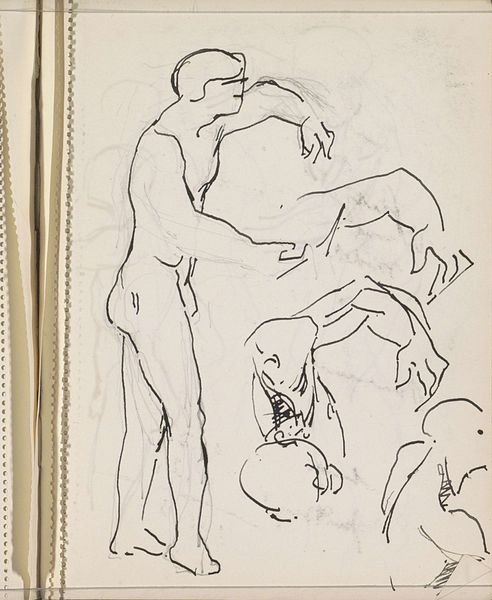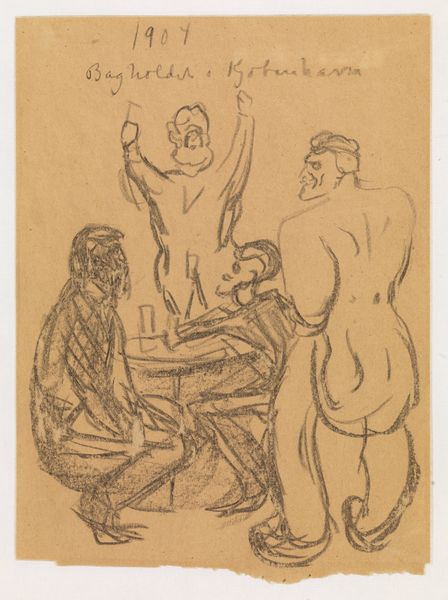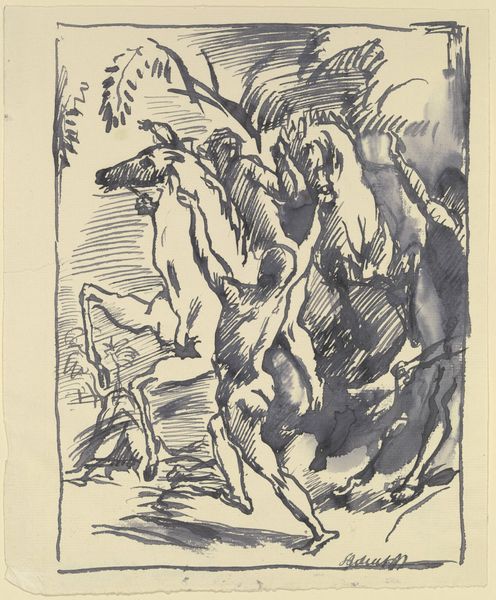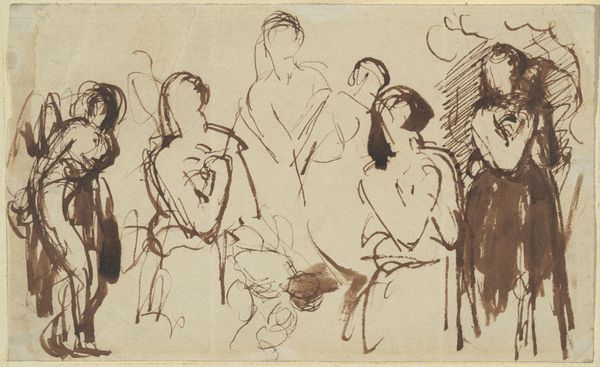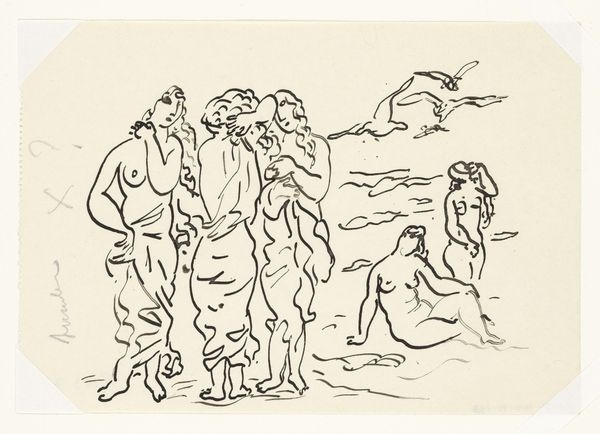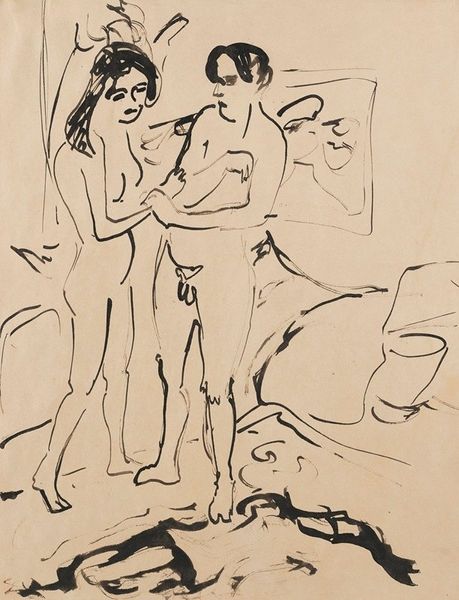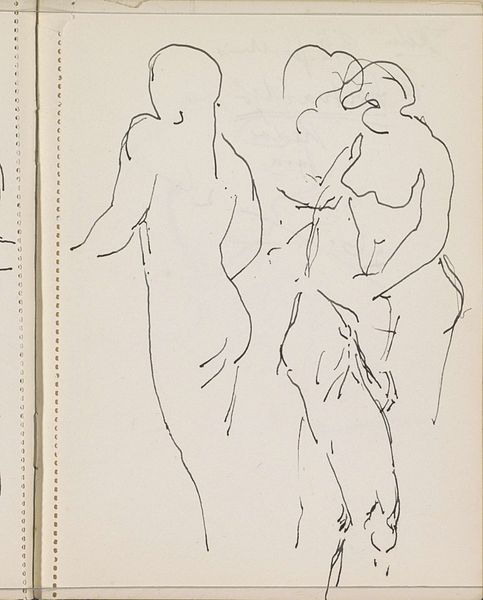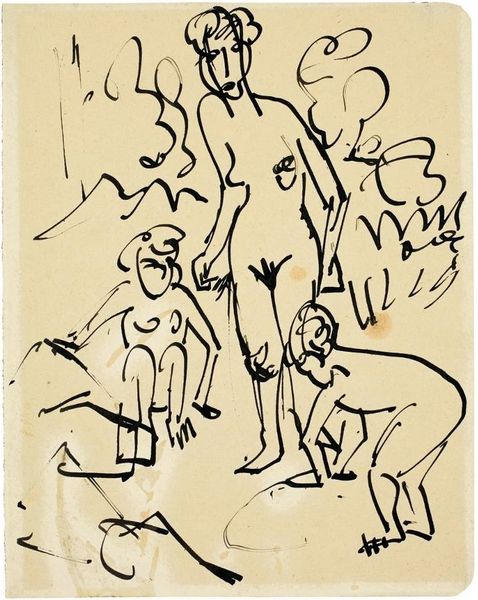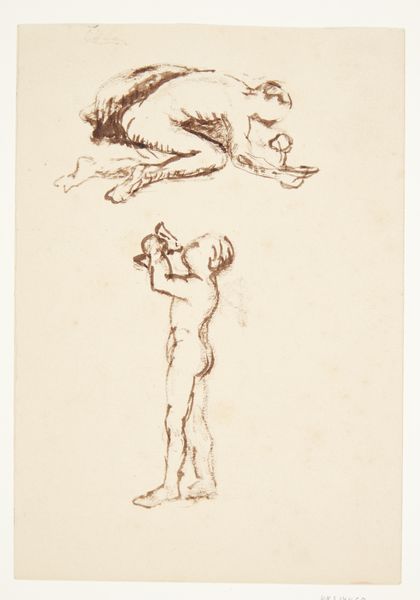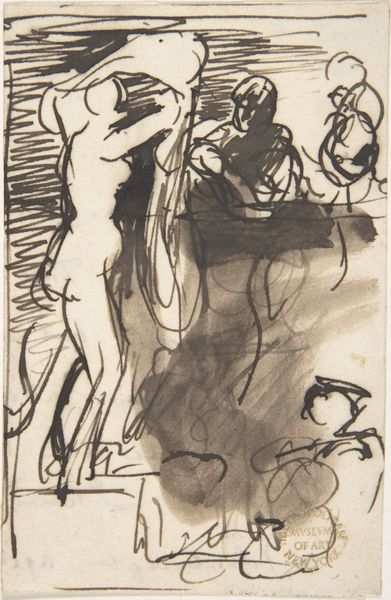
drawing, print, ink
#
drawing
#
ink drawing
# print
#
pen illustration
#
pen sketch
#
cartoon sketch
#
figuration
#
ink line art
#
personal sketchbook
#
linework heavy
#
ink
#
ink drawing experimentation
#
pen-ink sketch
#
expressionism
#
line
#
sketchbook drawing
Copyright: National Gallery of Art: CC0 1.0
Editor: This is "Die Boxer," or "The Boxers," possibly from 1920, by Rudolf Grossman. It’s an ink drawing, and it feels very dynamic. Almost a chaotic energy with all the figures intertwined. What do you see in this piece? Curator: I see a fascinating commentary on power dynamics and the male body within the context of early 20th-century anxieties. Look at how Grossman uses line work – harsh, almost brutal – to depict these figures. They’re boxers, yes, engaged in a contest of physical strength. But consider: who are these men, really? Editor: What do you mean? Curator: Think about the historical moment. The 1920s in Germany were a period of immense social and political upheaval after World War I. There’s an argument to be made that the violence within the boxing ring acts as a microcosm of the larger societal conflicts and tensions. Notice also that all of the subjects appear to be racialized. How might this drawing speak to racist ideologies, as a German vision of people with whom he sees difference? Do you get a sense of any power imbalance in this drawing? Editor: It's true, there is an implied hierarchy... So, is Grossman critiquing violence itself, or perhaps specifically the way society allows, maybe even celebrates, displays of male aggression, particularly across racial boundaries? Curator: Exactly! And think about how Expressionism, as a style, often sought to externalize inner turmoil and anxiety. This drawing, therefore, may not just be about boxing. Perhaps, more about repressed societal forces finding expression on the page through hyper-masculine encounters. Editor: That completely changes how I see the image. I was focused on the surface, the action, but now I’m considering the historical context and underlying themes of power. Curator: And hopefully understanding art's ability to reflect—and critique—the world around it.
Comments
No comments
Be the first to comment and join the conversation on the ultimate creative platform.
